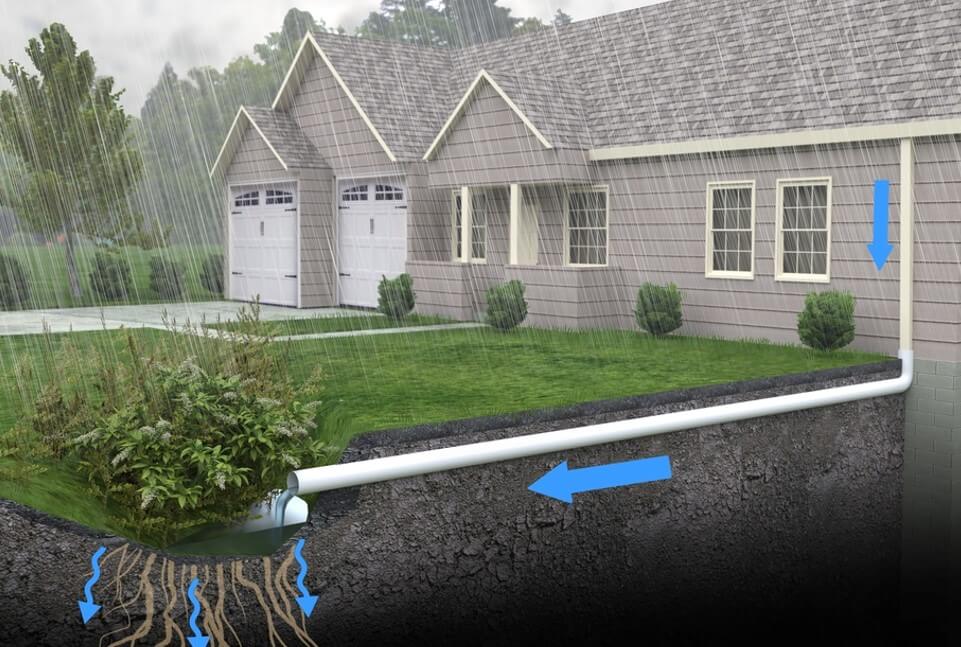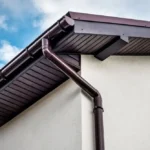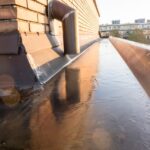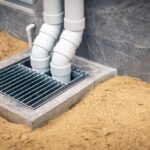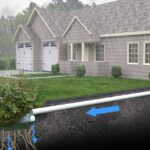As winter approaches, homeowners must prepare their homes to withstand harsh weather conditions. An essential aspect of this preparation is understanding and implementing effective roof drainage and snow melt systems. These systems are critical for protecting your home from potential water damage and ensuring safety during heavy snowfall. In this article, we will explore various aspects of these systems, providing you with the necessary knowledge to make informed decisions.

Understanding Roof Drainage Systems
Roof drainage systems are designed to channel water away from the roof and foundation of your home. This prevents water accumulation that can lead to leaks, structural damage, and mold growth. Proper drainage is not only crucial for maintaining the integrity of your roof but also for preventing costly repairs in the long run.
The Importance of Gutters and Downspouts
Gutters and downspouts are integral components of any roof drainage system. They collect rainwater from the roof and direct it away from your home. Regular maintenance, such as cleaning debris and ensuring secure attachments, is vital for their proper function. To learn more about maintaining your gutters, check out our article on proper roof water runoff.
Innovative Drainage Solutions
Innovations in roof drainage technology offer homeowners more efficient and sustainable options. Rain barrels and green roofs are excellent solutions for those looking to conserve water and reduce their environmental footprint. Discover more about these options in our guide on rain barrel systems.
Snow Melt Systems: A Necessity in Cold Climates
In regions prone to heavy snowfall, snow melt systems are an invaluable addition to your home. These systems prevent the accumulation of snow and ice on your roof, reducing the risk of ice dams, which can cause significant damage.
Types of Snow Melt Systems
There are several types of snow melt systems available, including electric heating cables and hydronic systems. Electric systems are easier to install and are ideal for smaller areas, while hydronic systems are more efficient for larger spaces. Understanding the differences will help you choose the right system for your needs.
Benefits of Snow Melt Systems
Investing in a snow melt system offers numerous benefits, such as preventing ice dams, reducing maintenance costs, and enhancing safety by eliminating slippery surfaces. For more insights on selecting the best system for your home, visit Cloud Roofing’s guide.
Installation and Maintenance of Roof Drainage and Snow Melt Systems
Proper installation and regular maintenance are crucial for the effectiveness of both roof drainage and snow melt systems. Hiring professionals ensures that these systems are correctly installed and functioning optimally.
DIY Maintenance Tips
While professional assistance is recommended, homeowners can perform simple maintenance tasks. Regularly checking for blockages, inspecting for leaks, and ensuring all components are securely fastened are vital steps. For DIY enthusiasts, our article on DIY drainage solutions provides helpful tips.
When to Call a Professional
Complex installations and significant repairs should be handled by professionals. They have the expertise to assess your roof’s condition and recommend the best solutions. To find the right expert, consider reading our advice on sealing roof drainage systems.
Cost Considerations
Investing in roof drainage and snow melt systems can be costly, but it’s a worthwhile investment for the longevity and safety of your home. Understanding the costs involved will help you budget accordingly.
Factors Affecting Costs
Several factors influence the cost of installation, including the size of your roof, the type of system, and labor charges. It’s important to obtain multiple quotes and compare services to ensure you’re getting the best value for your money.
Long-Term Savings
While the initial investment may seem high, the long-term savings in repair and maintenance costs make it a financially sound decision. Efficient systems can also contribute to lower energy bills by maintaining optimal temperatures and reducing heating needs.
Environmental Impact
Choosing environmentally friendly roof drainage and snow melt systems can significantly reduce your home’s environmental impact. Opting for systems that conserve water and use renewable energy sources is a step towards sustainability.
Water Conservation
Implementing rain barrels and green roofs not only aids in water conservation but also supports local ecosystems. These systems reduce stormwater runoff, which can carry pollutants into natural waterways.
Energy Efficiency
Electric snow melt systems powered by renewable energy sources contribute to energy efficiency. They minimize the reliance on fossil fuels, thereby reducing your carbon footprint.
Conclusion
In conclusion, investing in roof drainage and snow melt systems is essential for homeowners, especially those in colder climates. These systems protect your home from potential damage, enhance safety, and contribute to environmental sustainability. By understanding the various options available, you can make informed decisions that benefit both your home and the environment.

FAQ Section
What is the lifespan of a snow melt system?
The lifespan of a snow melt system depends on the type and quality of the installation. Generally, these systems can last anywhere from 10 to 20 years with proper maintenance.
Can I install a snow melt system on an existing roof?
Yes, snow melt systems can be installed on existing roofs. However, it’s crucial to consult with a professional to ensure compatibility and optimal performance.
How often should I clean my roof drainage system?
It’s recommended to clean your roof drainage system at least twice a year, ideally in the spring and fall, to prevent blockages and ensure proper function.
This article contains affiliate links. We may earn a commission at no extra cost to you.



